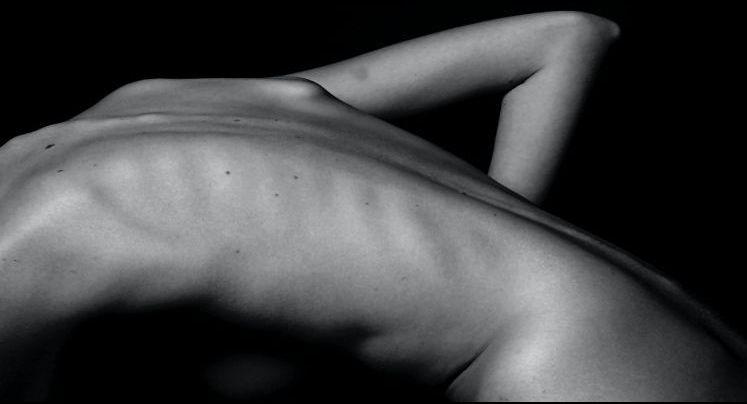
Recognise and treat coccygeal fistula
Updated on 02. November 2023
A coccygeal fistula, medically called pilonidal sinus, is a disease of the skin in the lower area of the buttocks. In a fissure, ducts form through which secretion drains from a focus of inflammation to the surface of the skin.
Coccygeal fistula Brief overview:
- Causes: Broken hairs under the skin
- Symptoms: Pain and swelling
- Prevention: Care of the coccyx region
- Treatment: Operation
Coccygeal fistula symptoms
An acute coccygeal fistula often makes itself felt through clear symptoms.
- Pain and swelling mostly in the cleft of the buttocks
- severe itching in the affected area
- Pain during exertion such as sitting and lying down
- Discharge of blood, pus or wound secretions
With a chronic fistula in the coccyx, the pain is often less. On the other hand, the secretion is often increased in this case.
Coccygeal fistula causes
The cause of a coccygeal fistula is broken hairs under the skin. The barbs of the hairs drive them into the skin, especially when sitting and moving. This irritates the skin and it reacts to the foreign bodies with inflammation. This area is enclosed with scar tissue to form a cyst. If the cyst becomes inflamed, channels can develop in the tissue in the form of a fistula. Purulent wound fluid leaks from the channels of the fistula.
Coccygeal fistula treatment
Surgery is necessary for the treatment of acute coccygeal fistula. Asymptomatic coccygeal fistulas that do not cause any symptoms do not need to be treated preventively.
What methods are used for coccygeal fistula surgery?
Various methods are used for the operation of a coccygeal fistula. The classic radical operations include scraping out the coccygeal fistula with open wound closure. A variation of this procedure is lateral wound closure with displacement flaps. This moves the wound away from the critical gluteal cleft. In the open skin area, the wound can heal more quickly and without complications than in the narrow gluteal cleft. New minimally intensive surgical procedures often have the advantage of a shorter healing time. Applied are:
- Laser procedure FiLaC: the channels of the fistula are destroyed by the energy of the laser.
- Pitpicking operation: the fistula ducts, the so-called pits, are removed microsurgically
What home remedies help with coccygeal fistula?
When caring for the coccygeal fistula after surgery, home remedies can have a wound-healing and infection-inhibiting effect. Manuka honey from the pharmacy is particularly worthy of mention, as it is very successful in counteracting wound infection in the early phase of wound healing. Manuka honey can be applied locally as a compress or like an ointment. In the later stages, sitz baths and compresses with [witch hazel]() and camomile can promote wound healing and reduce inflammation.

Hameli's vision
Go to Vision
Vaginal Fungus - Symptoms, Causes & Treatment
Go to Vaginal mycosis
Dry skin - What helps against it?
Go to Dry skin
Witch hazel - varieties, cutting, effect, & products
Go to Witch Hazel
Anal fistula - symptoms, causes & treatment
Go to Anal fistula
Labial tear - Symptoms, Causes & Treatment
Go to Labial tear
Intertrigo - Cause, symptoms and treatment of the skin wolf
Go to Intertrigo
Anal abscess: symptoms, recognition, causes & treatment
Go to Anal abscess
Chickenpox - symptoms, vaccination, infection and treatment | Hamelis
Go to Chickenpox
Seborrhoeic Eczema - Symptoms, Causes & Treatment
Go to Seborrhoeic eczema
Anal fissure - Symptoms. Causes & home remedies
Go to Anal fissure
Vaginal dryness - symptoms, causes & treatment
Go to Vaginal dryness
Hives - Cause, symptoms and treatment
Go to Hives
Hamelis experts
Go to Experts
Rose lichen - symptoms, causes and treatment
Go to Rose lichen
Scars - treatment and removal
Go to Scar
Ringworm: Symptoms, Causes & Treatment
Go to Ringworm
Scabies - symptoms, cause and treatment
Go to Scabies
Treat anal eczema sustainably
Go to Anal eczema
Eczema - symptoms, causes and treatment
Go to Eczema
Contact allergy - symptoms and treatment
Go to Contact allergy
Treat stubborn nail fungus
Go to Nail fungus
Crabs - Intimate area, symptoms & treatment
Go to Crabs
Pruritus - Causes, symptoms and treatment
Go to Pruritus
Rosacea on the face - symptoms, causes and treatment
Go to Rosacea
Perioral dermatitis - symptoms, treatment & home remedies
Go to Perioral dermatitis
Skin fungus - cause, symptoms and treatment
Go to Skin fungus
Perineal tear - origin, degrees & causes
Go to Perineal laceration
Anal prolapse: symptoms, causes, treatment
Go to Anal prolapse
Skin rash - causes and treatment
Go to Skin rash
Genital herpes - woman, man & symptoms
Go to Genital herpes
Atopic dermatitis in children, adults and pets
Go to Atopic dermatitis
Angioedema - symptoms, causes and therapy
Go to Angioedema
Nappy dermatitis - cause and treatment of sore baby bottom
Go to Diaper rash
Sunburn - symptoms, duration & what helps?
Go to Sunburn
